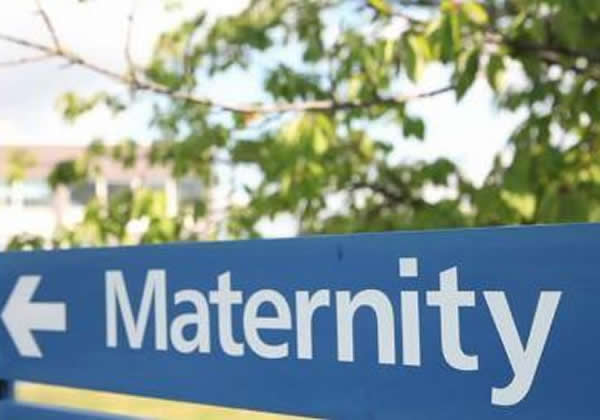Transcript – Active first stage of labour
There are 3 different stages in labour:
The First stage starts with the onset of regular contractions along with the dilation or opening of the cervix (neck/entrance of the womb) and ends when the cervix is fully open, said to be 10cm.
The Second stage, often known as the ‘pushing’ stage, starts from when the cervix is at 10cm and ends when the baby is born.
The Third stage is from the birth of the baby to when the placenta is delivered.
The First stage can be broken down into the Latent phase and the Active phase. The Latent phase is the early part of your labour and can consist of irregular contractions that can be uncomfortable or painful. This will not be constant – it can come and go in a cluster of contractions that might then settle for a long period of time and you will be able to rest and recoup in between. It can feel like you are experiencing period-type pain or backache to start with, and throughout this time the cervix is becoming softer and thinner. This can take a few days, particularly for first time mothers, until the contractions slowly start to build up, becoming more regular and more painful as the cervix begins to stretch and open up to 4cm. For women who have had a baby before, this phase can be much quicker, lasting around 6 hours or even shorter.
The Latent phase is followed by the Active phase of the first stage of labour, which is more intense and is normally shorter than the latent phase. You will hear staff refer to ‘established labour’ and this is what they mean. The Active first stage of labour is when the cervix opens from 4cms to 10cms to allow for the baby to pass through.
If this is your first baby, the active first stage of labour will last on average 8-10 hours (maximum usually less than 18 hours) and will be shorter if you’ve given birth before, at around 5 hours (maximum usually less than 12 hours).
During this active phase of labour, contractions become more powerful, stronger, more regular and longer-lasting. They normally last about 60 seconds each, with at least 2 contractions in a ten-minute period, and there should be time to rest between contractions.
The muscles of the womb contract, but they do not relax completely after each contraction, resulting in the cervix being pulled upwards which makes it dilate. At the same time, the contractions slowly push the baby further down the pelvis and the pressure of baby’s head against the cervix encourages your body to release more Oxytocin hormone to keep your labour progressing.
The waters around baby often break during established labour, but they may have already broken and sometimes do not break at all until the baby is born.
Once you are in the Active first stage of labour, the midwife will want to check you and your baby, in order to make sure that you are both okay. She will offer to take your observations, such as your temperature and blood pressure etc; this will indicate whether everything is as expected. She will ask about your baby’s movements and will listen to baby’s heart rate, using a hand-held machine called a doppler or the larger fetal heart monitor (CTG machine) that is used on the Consultant obstetric Labour ward. For further details about the different types of monitoring, please see our topic ‘Fetal Heart Monitoring in Labour’.
The midwife will also offer to monitor your progress in labour by analysing the contractions to see how strong, long and regular they are. Progress in labour can also be monitored by vaginal (internal) examination. The vaginal examinations consist of an initial assessment and then repeated every four hours during active labour to see how soft, thin and open your cervix is. All monitoring will be offered to you with an explanation of why it is being offered and it is your choice whether to accept. It is important to remember to ask questions if you are unsure of anything. You can ask about the benefits and risks of any interventions offered to you, and you can ask about possible alternatives or what happens if the internal examinations are not done.
Once your cervix is fully dilated (10cms open) there can be a period of transition or change, where contractions may ease off a little as baby begins its final descent within the pelvis and gets into the correct position. At this stage you may begin to feel overwhelmed and agitated, but this tends to only last around 15 minutes or so and your midwife will support you through this – it can be a good sign that your baby is almost here! As the contractions continue, you may begin to experience an urge to push and usually that is when the second stage of labour is commenced. Occasionally, some women will experience the urge to push before the cervix is fully dilated and the midwife may ask you to change positions and try other approaches to reduce the urge to push.






